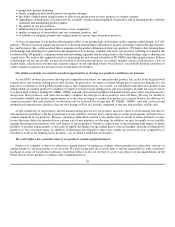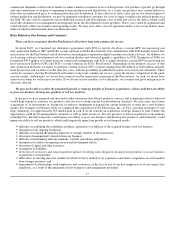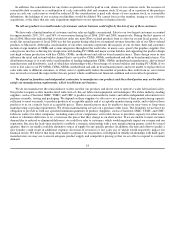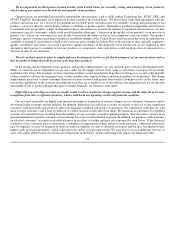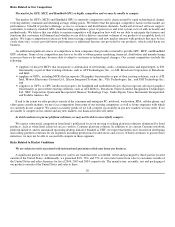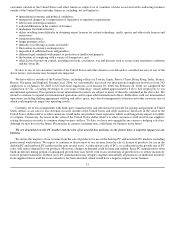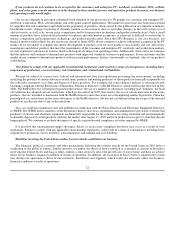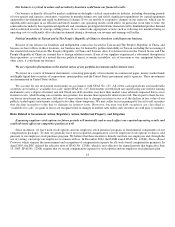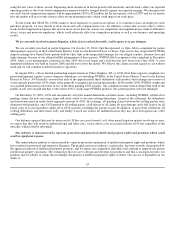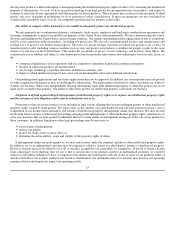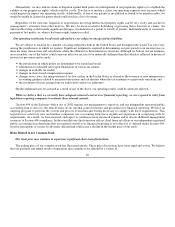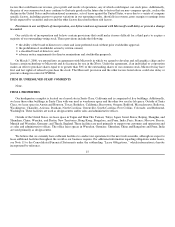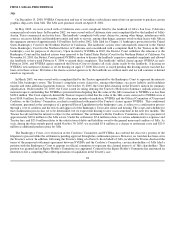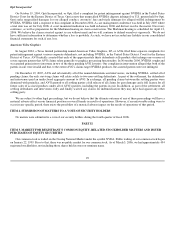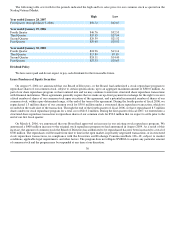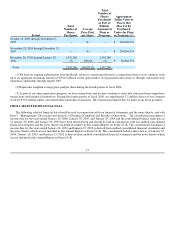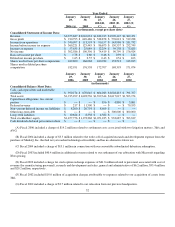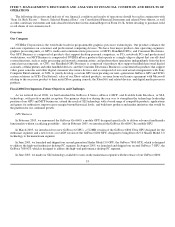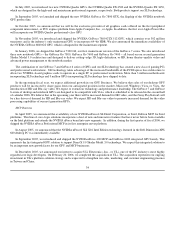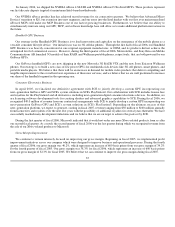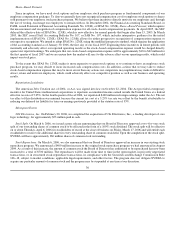NVIDIA 2006 Annual Report Download - page 32
Download and view the complete annual report
Please find page 32 of the 2006 NVIDIA annual report below. You can navigate through the pages in the report by either clicking on the pages listed below, or by using the keyword search tool below to find specific information within the annual report.
Alternatively, we may initiate claims or litigation against third parties for infringement of our proprietary rights or to establish the
validity of our proprietary rights, which could be costly. If we have to initiate a claim, our operating expenses may increase which
could negatively impact our operating results. Additionally, if one of our patents is invalidated or found to be unenforceable, we
would be unable to license the patent which could result in a loss of revenue.
Regardless of the outcome, litigation or negotiations involving intellectual property rights can be very costly and can divert
management's attention from other matters. We may be unsuccessful in defending or pursuing these lawsuits or claims. An
unfavorable ruling could include significant damages, invalidation of a patent or family of patents, indemnification of customers,
payment of lost profits, or, when it has been sought, injunctive relief.
Our operating results may be adversely affected if we are subject to unexpected tax liabilities.
We are subject to taxation by a number of taxing authorities both in the United States and throughout the world. Tax rates vary
among the jurisdictions in which we operate. Significant judgment is required in determining our provision for our income taxes as
there are many transactions and calculations where the ultimate tax determination is uncertain. Although we believe our tax estimates
are reasonable, any of the below could cause our effective tax rate to be materially different than that which is reflected in historical
income tax provisions and accruals:
• the jurisdictions in which profits are determined to be earned and taxed;
• adjustments to estimated taxes upon finalization of various tax returns;
• changes in available tax credits;
• changes in share−based compensation expense;
• changes in tax laws, the interpretation of tax laws either in the United States or abroad or the issuance of new interpretative
accounting guidance related to uncertain transactions and calculations where the tax treatment was previously uncertain; and
• the resolution of issues arising from tax audits with various tax authorities.
Should additional taxes be assessed as a result of any of the above, our operating results could be adversely affected.
While we believe that we currently have adequate internal control over financial reporting, we are exposed to risks from
legislation requiring companies to evaluate those internal controls.
Section 404 of the Sarbanes−Oxley Act of 2002 requires our management to report on, and our independent registered public
accounting firm to attest to, the effectiveness of our internal control structure and procedures for financial reporting. We have an
ongoing program to perform the system and process evaluation and testing necessary to comply with these requirements. This
legislation is relatively new and neither companies nor accounting firms have significant experience in complying with its
requirements. As a result, we have incurred, and expect to continue to incur increased expense and to devote additional management
resources to Section 404 compliance. In the event that our chief executive officer, chief financial officer or our independent registered
public accounting firm determine that our internal control over financial reporting is not effective as defined under Section 404,
investor perceptions of us may be adversely affected and could cause a decline in the market price of our stock.
Risks Related to our Common Stock
Our stock price may continue to experience significant short−term fluctuations.
The trading price of our common stock has fluctuated greatly. These price fluctuations have been rapid and severe. We believe
that our quarterly and annual results of operations may continue to be affected by a variety of
26


